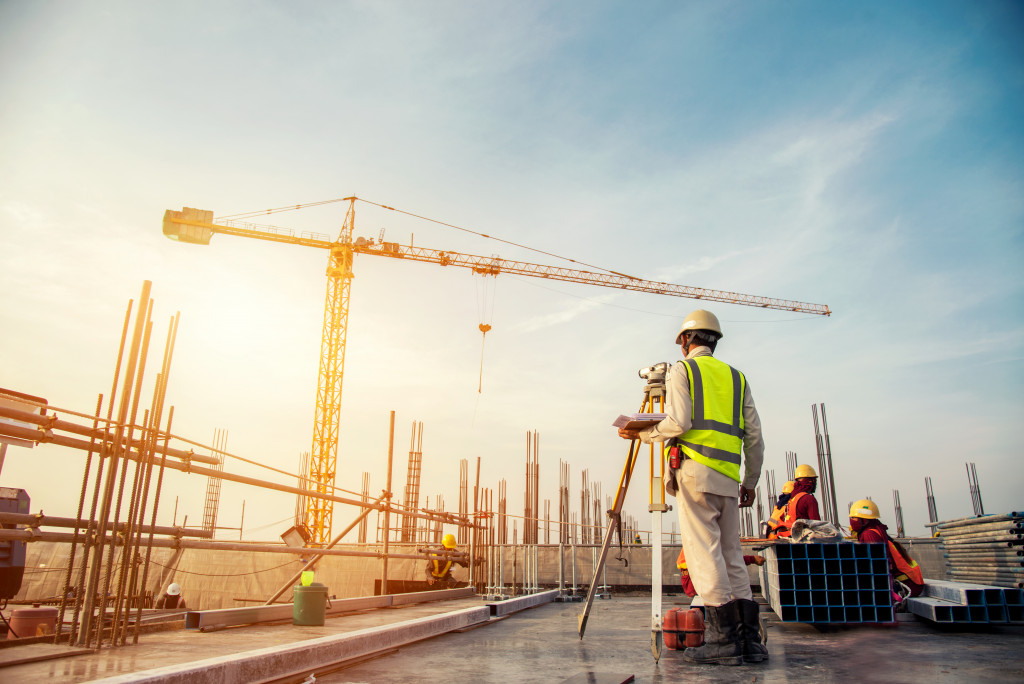- Inspect tools and machinery regularly to identify potential hazards before using and adhere to OSHA regulations to protect workers.
- Enforce safety protocols and procedures for a culture shift focused on safety first.
- Provide regular safety training for employees to keep them up-to-date on safety protocols.
- Utilize proper personal protective equipment to protect workers from potential hazards and ensure adequate lighting on the site.
Construction sites are inherently dangerous, so employers must ensure that their workers have the necessary training and safety protocols to minimize accidents.
While some measures can be costly and time-consuming, they are essential for maintaining a safe working environment. Employers can ensure worker safety by taking proactive steps toward ensuring their construction site remains free from serious incidents.
Inspect tools and machinery regularly.
Inspecting tools and machinery regularly is essential to ensuring safety on construction sites. This allows workers to identify issues that may lead to accidents or dangerous situations. Employers must ensure their employees know how to operate and maintain equipment and identify any potential hazards.
Moreover, providing proper training can reduce the risk of equipment-related incidents or injuries. Additionally, putting any newly purchased equipment through load testing before its first user can also prevent potential risks. Hiring certified load testing services helps guarantee quality assurance and minimize accidents from preventive maintenance failures.
Implement safety procedures
Here are some tips on how to implement safety procedures on construction sites:
Adhere to OSHA regulations.
Adhering to regulations provided by the Occupational Safety and Health Administration (OSHA) is an essential safety and training method for minimizing accidents on construction sites. Not only does following OSHA guidelines protect employees from workplace hazards, but it also sets a high standard for safety innovation that encourages employers to be proactive in matters concerning their workers’ health and provides assurance to company shareholders.
Additionally, ensuring that all relevant inspections are carried out and implementing awareness programs on proper health and safety practices reduces the risk of fines or penalties. As important, adhering to OSHA regulations prevents costly lawsuits resulting from on-site injuries or fatalities.
Enforce safety protocols and procedures.

Adhering to safety protocols and procedures on a construction site is paramount to reducing workplace accidents. Strict enforcement of these rules should be enforced by those in charge, not just for compliance’s sake but for an overall culture shift focusing on getting the job done safely.
Training must be conducted regularly so that workers know any new rules or elements that have changed since their last training. It’s not enough to just provide safety glasses and hard hats — workers need to know proper protocol and behavior when working on-site. Establishing a strict enforcement process for procedure violations can help keep all personnel accountable for any dangerous incidents or lack thereof, thus promoting a vibration of responsibility within the workplace, leading to greater safety.
The ultimate goal is to develop a culture focused on safety first, reaching zero-accident goals while maintaining productivity. A safer construction site reduces costs due to medical bills, insurance premiums, repairs, and missed workdays.
Provide regular safety training for employees.
Regular safety training to employees on construction sites is essential in protecting their physical and mental well-being, decreasing accidents, and ultimately creating a safer work environment. Training should include accident prevention, handling hazardous materials, using personal protective equipment (PPE), and proper lifting techniques.
By reviewing these topics regularly, employers ensure that employees are up-to-date on safety protocols and procedures, can identify potential hazards quickly, utilize PPE properly when needed, and reduce the possibility of workplace injuries. Investing in this kind of safety training helps protect workers and benefits companies financially by minimizing the cost associated with injury claims.
Utilize proper personal protective equipment.

Using proper personal protective equipment (PPE) is essential for maintaining worker safety and providing comprehensive accident prevention on construction sites. By training workers to wear the necessary PPE, employers can protect them against any potential hazards they could face while on the job.
This includes working in hazardous environments or performing tasks that may require specialized safety gear, such as hard hats, ear protection, protective eyewear, hand protection, and more. Having an understanding of the types of personal protective equipment needed helps workers identify any risks and mitigate them quickly.
Construction site safety should be taken seriously, and investing in the right PPE shows that employees’ well-being is a priority to a company. Proper PPE helps reduce injuries, medical costs, and downtime due to accidental injuries – all of which are benefits beyond simply demonstrating care for employee health and welfare.
Ensure adequate lighting on the site.
Ensuring adequate lighting on a construction site is an important safety and training measure that can help to minimize accidents. Proper lighting helps prevent falls, collisions, and trips due to not being able to identify hazards in poorly lit areas. Additionally, proper lighting makes it easier for workers to communicate and coordinate with one another more efficiently when carrying out complex tasks.
By implementing adequate lighting, construction companies can also ensure that workers can adequately carry out other safety protocols like fire prevention and evacuation plans. In short, adequate lighting on a construction site helps make the job site safer for all people involved.
These are just a few measures employers must take to ensure worker safety on construction sites. By following these tips, employers can create a safe environment where their workers feel confident and secure when completing various tasks.

